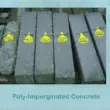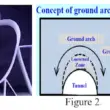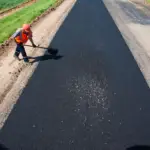Entering the realm of construction or landscaping can evoke a blend of excitement and apprehension, particularly when facing the prospect of manoeuvring heavy machinery such as a mini digger. Yet, armed with the appropriate understanding and groundwork, navigating the operation of this versatile equipment can swiftly evolve from a daunting challenge to a rewarding skill. In this comprehensive guide, we’re here to accompany you through every essential aspect, ensuring you gain the confidence needed to proficiently operate a mini digger and undertake an array of tasks.
Whether you’re delving into excavation projects or shaping outdoor spaces, the mini digger stands as a pivotal tool in your arsenal. Its compact design, coupled with robust capabilities, renders it indispensable across various construction and landscaping endeavours. However, unlocking its full potential demands a thorough grasp of its functionalities and operational nuances.
Within these pages, we’ll unravel the complexities surrounding mini digger operation, breaking down each component and manoeuvre into digestible insights. From mastering the controls to executing precise movements, we’ll provide you with the knowledge needed to navigate the intricacies of this machinery with finesse.
So, if you’re eager to embark on your construction or landscaping ventures, consider exploring the options for electric digger hire from KHD Brokk Hire. With their extensive range of equipment and expertise, you’ll find the perfect solution to kickstart your projects with confidence. Let’s dive in and unlock the potential of the mini digger together.
If you are ready to proceed with works, take a look at electric digger hire from KHD Brokk Hire.

What is a Mini Digger?
Before diving into operation, it’s essential to understand what exactly a mini digger is and what it’s used for. Also known as a compact excavator or mini excavator, a mini digger is a small, manoeuvrable machine designed for digging and excavation tasks in tight spaces. It consists of a tracked or wheeled chassis, a hydraulic arm with a bucket attachment, and a cabin for the operator. KHD Brokk Hire also offer skid steer hire across the UK.
Key Components of a Mini Digger
Chassis: The chassis is the base of the mini digger and houses the engine, hydraulic system, and tracks or wheels for movement. Tracks provide better traction, especially on uneven terrain, while wheels offer greater speed on flat surfaces.
Hydraulic Arm: This is the primary tool for digging and lifting. It consists of several segments connected by hydraulic cylinders, allowing for flexible movement and precise control.
Bucket Attachment: The bucket is mounted at the end of the hydraulic arm and comes in various sizes and shapes depending on the task at hand. It’s used for scooping, lifting, and moving materials such as soil, gravel, or debris.
Like Us on Facebook!
Operator Cabin: The cabin is where the operator sits and controls the mini digger. It’s equipped with joysticks, pedals, and other controls for operating the machine’s movement and attachments.
Subscribe Us on YouTube!
Safety First
Operating a mini digger, such as Brokk machines, involves inherent risks, so safety should always be your top priority. Before using the machine, familiarise yourself with the operator’s manual and follow these basic safety guidelines:
Wear appropriate personal protective equipment (PPE) such as a hard hat, safety glasses, gloves, and steel-toed boots.
Inspect the mini digger for any signs of damage or malfunction before each use.
Ensure that the area is clear of obstacles and bystanders before starting the machine.
Always buckle up in the operator’s seat and maintain three points of contact when entering or exiting the cabin.
Never exceed the machine’s load or reach capacities, and operate on stable ground to prevent tipping.
Use caution when working near utilities, underground cables, or other hazards. Always call for utility locates before digging.
Operating a Mini Digger Like a Pro
Whether you’re digging trenches, clearing land, or performing delicate landscaping tasks, mastering the operation of a mini digger requires a combination of skill, precision, and safety awareness. In this part of our guide, we’ll walk you through the step-by-step process of operating a mini digger effectively.
Step 1: Pre-Operation Inspection
Before starting the mini digger, it’s crucial to perform a thorough inspection to ensure that the machine is in proper working condition. Here’s what to check:
- Inspect the tracks or wheels for signs of wear or damage.
- Check the hydraulic fluid level and look for any leaks.
- Test the controls to ensure they are responsive and functioning correctly.
- Examine the bucket attachment for any defects or loose parts.
- Verify that all safety features, such as lights and alarms, are operational.
Step 2: Startup Procedure
Once you’ve completed the pre-operation inspection and ensured that the area is clear of obstacles and bystanders, it’s time to start the mini digger. Follow these steps:
- Sit in the operator’s seat and fasten your seatbelt.
- Turn the ignition key to start the engine.
- Allow the engine to warm up for a few minutes before operating any controls.
- Familiarise yourself with the joystick controls for the movement of the machine and the hydraulic arm.
- Adjust the mirrors and seat position for optimal visibility.
Step 3: Basic Operation
Operating a mini digger requires precise control of both the movement of the machine and the hydraulic arm. Here are some basic techniques to keep in mind:
- Use the joystick controls to move the mini digger forward, backward, and turn left or right.
- Raise and lower the hydraulic arm using the corresponding joystick controls.
- Tilt the bucket attachment forward or backward to scoop or dump materials.
- Practice operating the mini digger in a controlled environment before tackling more complex tasks.
Step 4: Performing Common Tasks
Once you’re comfortable with the basic operation of the mini digger, you can start performing common tasks such as:
- Digging trenches for utility lines or drainage systems.
- Excavating holes for foundations or landscaping features.
- Clearing debris and vegetation from construction sites or overgrown areas.
- Lifting and moving heavy materials such as gravel, soil, or rocks.
Step 5: Safety Practices
Throughout operation, it’s essential to prioritise safety at all times. Here are some key safety practices to keep in mind:
- Always maintain a safe distance from the edge of trenches or excavations to prevent collapse.
- Never operate the mini digger on steep slopes or unstable ground.
- Be mindful of overhead obstacles such as power lines or tree branches.
- Avoid sudden movements or jerky controls to prevent accidents or damage to the machine.
- Shut off the engine and engage the parking brake when exiting the mini digger.
Conclusion
Operating a mini digger may seem intimidating at first, but with practice and proper training, you can quickly become proficient in using this valuable piece of equipment. By following the steps outlined in this guide and prioritising safety at all times, you’ll be well on your way to mastering the art of mini digger operation. So roll up your sleeves, grab the controls, and get ready to tackle your next excavation project with confidence!



















